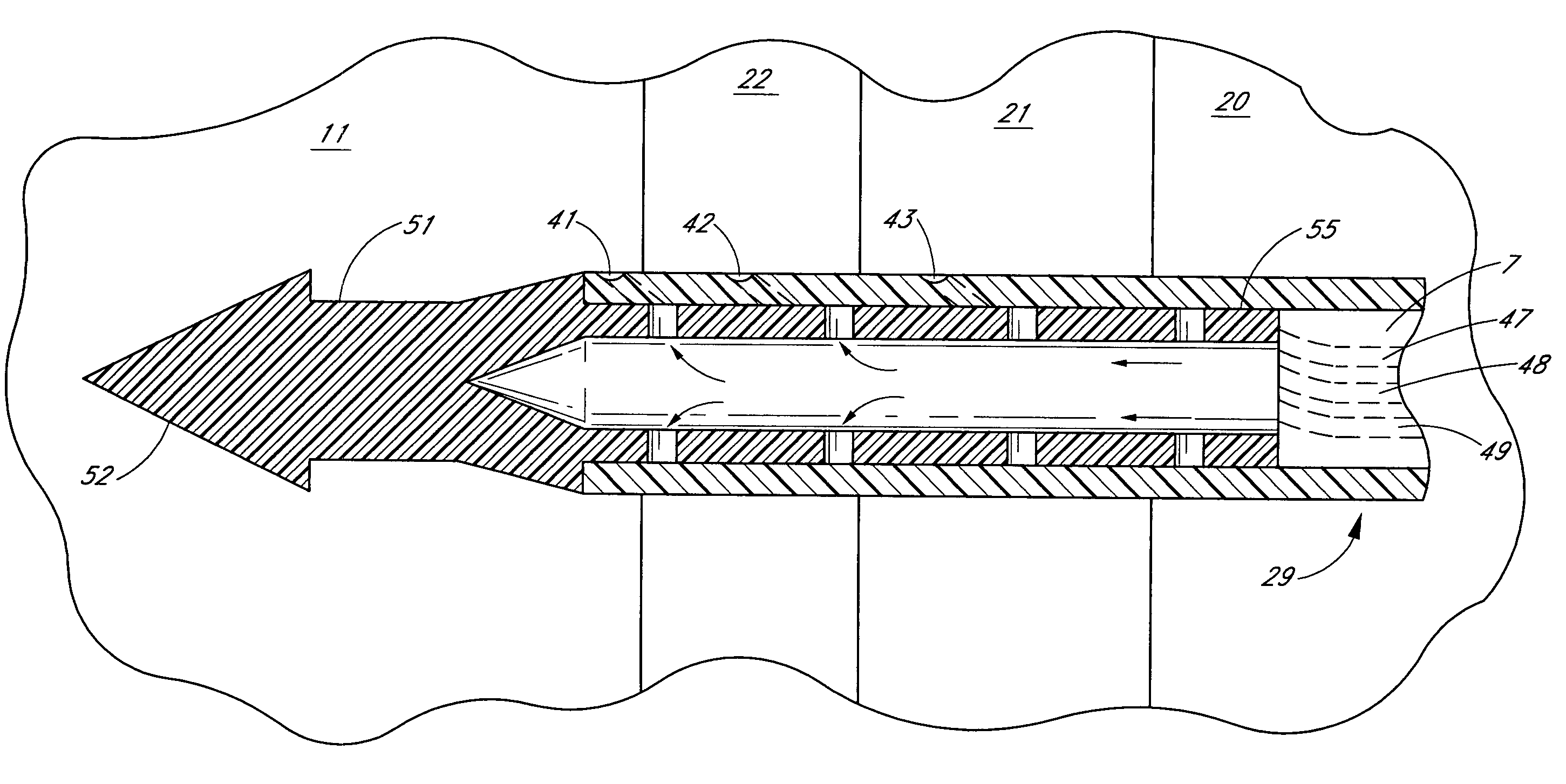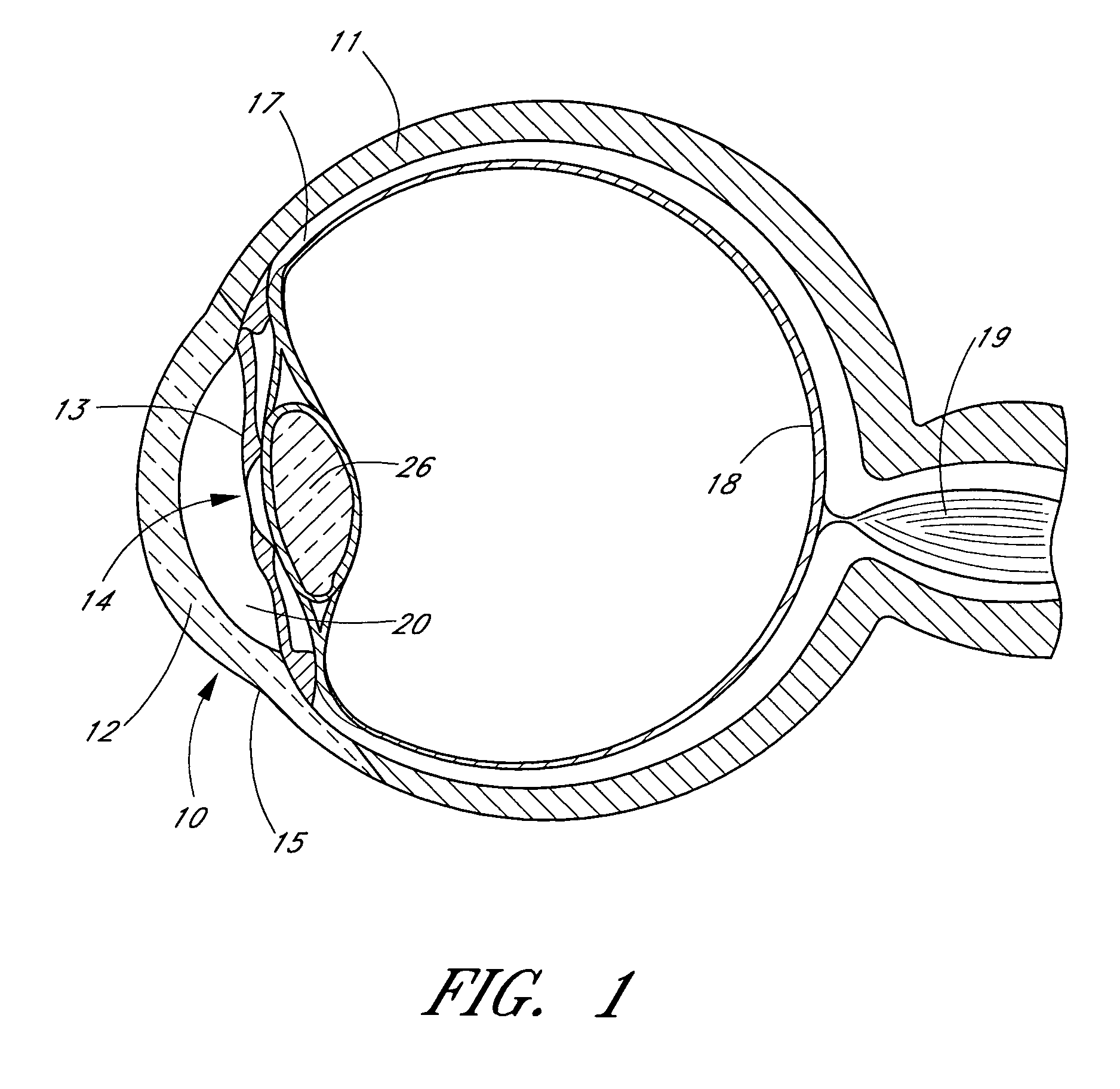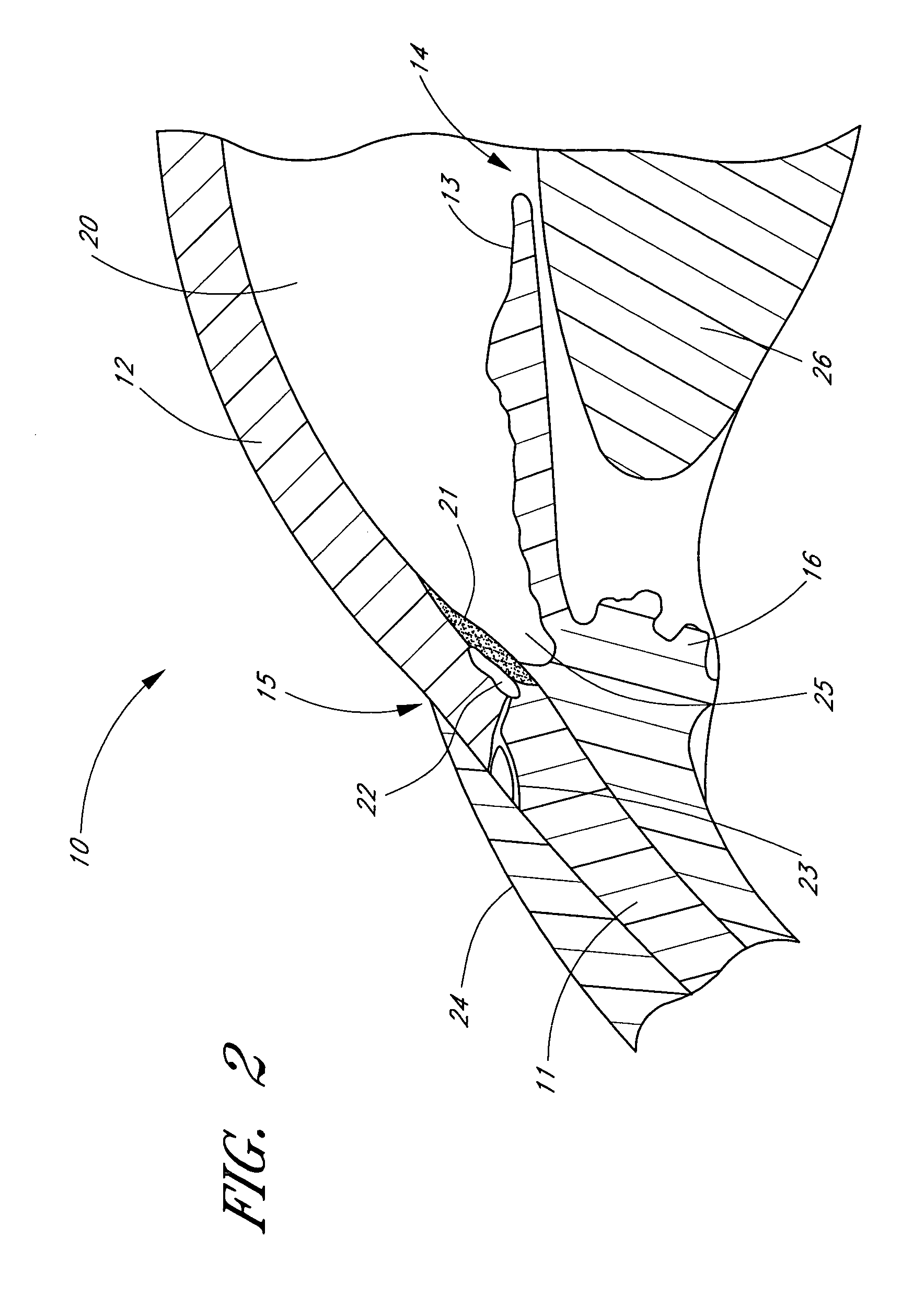Ocular implant with anchor and multiple openings
a technology of ocular implants and multiple openings, applied in the field of improved medical devices and methods, can solve the problems of headache, untreated blindness, and blurred vision, and achieve the effect of reducing intraocular pressur
- Summary
- Abstract
- Description
- Claims
- Application Information
AI Technical Summary
Benefits of technology
Problems solved by technology
Method used
Image
Examples
Embodiment Construction
[0042]In accordance with a preferred method, trabecular bypass surgery creates an opening or a hole through the diseased trabecular meshwork through minor microsurgery. To prevent “filling in” of the hole, a biocompatible elongate implant is placed within the hole as a trabecular stent, which may include, for example, a solid rod or hollow tube. In one exemplary embodiment, the trabecular stent implant may be positioned across the diseased trabecular meshwork alone and it does not extend into the eye wall or sclera. In another embodiment, the inlet end of the implant is exposed to the anterior chamber of the eye while the outlet end is positioned at the exterior surface of the trabecular meshwork. In another exemplary embodiment, the outlet end is positioned at and over the exterior surface of the trabecular meshwork and into the fluid collection channels of the existing outflow pathways. In still another embodiment, the outlet end is positioned in the Schlemm's canal. In an alterna...
PUM
 Login to View More
Login to View More Abstract
Description
Claims
Application Information
 Login to View More
Login to View More - R&D
- Intellectual Property
- Life Sciences
- Materials
- Tech Scout
- Unparalleled Data Quality
- Higher Quality Content
- 60% Fewer Hallucinations
Browse by: Latest US Patents, China's latest patents, Technical Efficacy Thesaurus, Application Domain, Technology Topic, Popular Technical Reports.
© 2025 PatSnap. All rights reserved.Legal|Privacy policy|Modern Slavery Act Transparency Statement|Sitemap|About US| Contact US: help@patsnap.com



